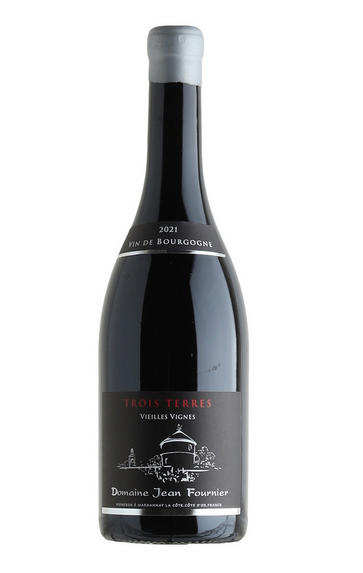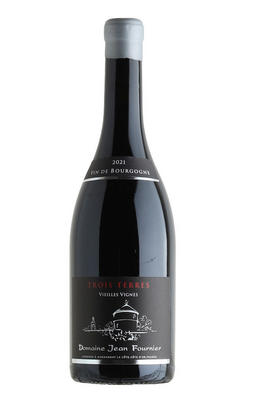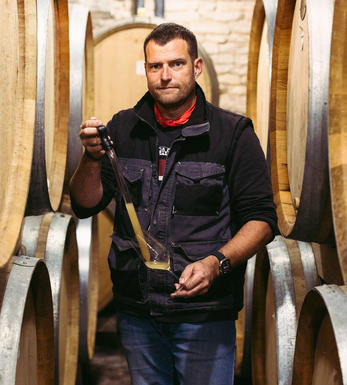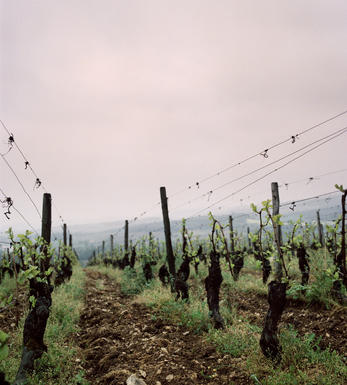
2021 Marsannay Rouge, Trois Terres, Vieilles Vignes, Domaine Jean Fournier, Burgundy

Critics reviews
Drink 2025-2030
Jasper Morris, Inside Burgundy (January 2023)
About this WINE

Domaine Jean Fournier
Laurent Fournier has achieved a lot since taking charge of the domaine established by his father, Jean, in the 1960s. In 2011, he was voted the Cotes de Nuits’ young vigneron of the year. He has since dedicated much of his considerable energy campaigning to establish Premiers Crus in Marsannay. Although he has begun leasing parcels in the Côte de Beaune, Gevrey-Chambertin and Clos de Vougeot, Laurent’s heart remains in Marsannay. All of the vineyards are farmed organically, with certification.
For Laurent, the 2022 season wasn’t too complicated. He explained that the grapes perhaps ripened more through concentration than by traditional means because there was insufficient water. However, the vines did not appear to be struggling, with no loss of leaves or obvious signs of stress, as had been the case in 2019 and 2020. Laurent doesn’t subscribe to the theory that the vines are adapting, though he does find the wines surprisingly fresh, perhaps because more fertiliser is being used after several years when everyone ceased to do so. For him, 2022 is a vintage with excellent clarity of terroir expression.

Bourgogne Rouge
Bourgogne Rouge is the term used to apply to red wines from Burgundy that fall under the generic Bourgogne AOC, which can be produced by over 350 individual villages across the region. As with Bourgogne Blanc and Bourgogne Rosé, this is a very general appellation and thus is hard to pinpoint any specific characteristics of the wine as a whole, due to the huge variety of wines produced.
Around 4,600 acres of land across Burgundy are used to produce Bourgogne Rouge, which is around twice as much as is dedicated towards the production of generic whites.
Pinot Noir is the primary grape used in Bourgogne Rouge production, although Chardonnay, Pinot Blanc, Pinot Gris and in Yonne, César grapes are all also permitted to make up the rest of the wine. These wines tend to be focused and acidic, with the fruit less cloying than in some New World wines also made from Pinot Noir, and they develop more floral notes as they age.
Although an entry-level wine, some Bourgogne Rouges can be exquisite depending on the area and producer, and yet at a very affordable price.

Pinot Noir
Pinot Noir is probably the most frustrating, and at times infuriating, wine grape in the world. However when it is successful, it can produce some of the most sublime wines known to man. This thin-skinned grape which grows in small, tight bunches performs well on well-drained, deepish limestone based subsoils as are found on Burgundy's Côte d'Or.
Pinot Noir is more susceptible than other varieties to over cropping - concentration and varietal character disappear rapidly if yields are excessive and yields as little as 25hl/ha are the norm for some climats of the Côte d`Or.
Because of the thinness of the skins, Pinot Noir wines are lighter in colour, body and tannins. However the best wines have grip, complexity and an intensity of fruit seldom found in wine from other grapes. Young Pinot Noir can smell almost sweet, redolent with freshly crushed raspberries, cherries and redcurrants. When mature, the best wines develop a sensuous, silky mouth feel with the fruit flavours deepening and gamey "sous-bois" nuances emerging.
The best examples are still found in Burgundy, although Pinot Noir`s key role in Champagne should not be forgotten. It is grown throughout the world with notable success in the Carneros and Russian River Valley districts of California, and the Martinborough and Central Otago regions of New Zealand.


Buying options
Add to wishlist
Description
A full deep purple. There is an impressive weight of fruit on the nose, albeit less explosive than the Croix Violettes. On the palate though the same quality comes out, with perhaps some wood tannins here. Very reserved but with great potential. One barrel was slow to complete malolactic, which explains the relative backwardness.
Drink 2025-2030
Jasper Morris, Inside Burgundy (January 2023)
wine at a glance
Delivery and quality guarantee